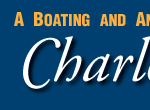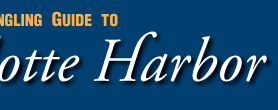CONTACT US:
Florida Fish and Wildlife
Conservation Commission
Fish and Wildlife
Research Institute
100 Eighth Avenue SE
St. Petersburg, Florida 33701
727-896-8626
|
|
|
Charlotte County
UF/IFAS Extension
Florida Sea Grant
25550 Harbor View Rd #3
Port Charlotte, Florida 33980
941-764-4340
|
|
|

|
|
Funding for this project was obtained through grants from the West Coast Inland Navigation District and Charlotte County.
|
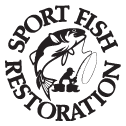
|
|
Additional funding for this project was obtained through the Federal Aid in Sport Fish Restoration Fund.
|
|
|

|
Charlotte Harbor is a rich mosaic of fish and wildlife habitats that form life-sustaining links in an ecosystem as biologically productive as some of the world’s most celebrated rain forests. From coastal mangroves and marshes to underwater meadows of seagrass, from the open harbor to the salty mouth at the Gulf of Mexico, each interdependent habitat plays a vital role in this “Estuarine Machine.”
Seagrasses and mangroves, most notable among these habitats, contribute significantly to a dynamic food chain that draws nutrients from the harbor floor. As seagrass and mangrove leaves decay, they provide food for small creatures that are ultimately consumed by fish and larger predators in an endless circle of life.
|
SEAGRASSES
Seagrasses are flowering underwater plants found at shallow depths in bays and lagoons and in nearshore waters of the Gulf of Mexico. As a nursery environment, seagrasses support small fish, shrimp, and crabs that hide among the blades and feast on decaying leaves. Seagrasses also help stabilize shifting sands on the bottom of the harbor and improve water clarity by trapping fine sediments.
|
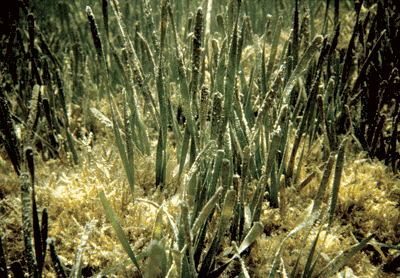
|
Once plentiful, seagrass beds now cover less than half of their original acreage in Charlotte Harbor - a loss triggered by dredge-and-fill activity and declines in water quality. Damage from motor boats is severe in areas. As boats carve through shallow grass flats, their propellers cut sandy trenches that may stay barren for years.
|
|
More information about seagrass can be found in the brochure "Florida's Seagrasses" (PDF, 600 KB).
|
Seagrass Scarring
More than 80 percent of all recreationally and commercially important fish species are dependent upon seagrass at some point in their lives. Seagrass improves water quality, traps sediment, provides shelter for many juvenile fish species, and provides a food source for other marine life. Avoid damaging seagrass by knowing your boat’s operating depth and navigating in marked channels. Anchor only in bare sandy bottoms. If you run aground in shallow water, stop and pole your boat into deeper water.
|
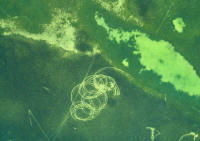
|
Destruction of seagrass in Aquatic Preserves is a violation of Florida Law and carries a penalty of up to $1,000.
|
|
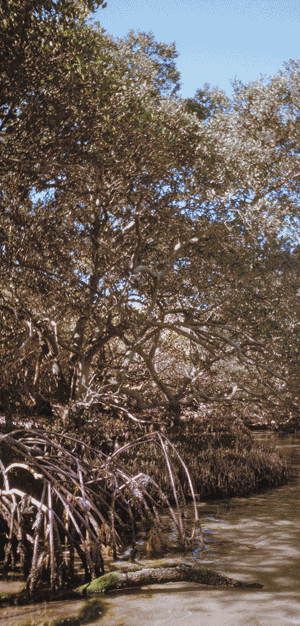
|
MANGROVES
Mangroves are tropical trees that thrive in salty environments along the water’s edge. Like seagrasses, they provide food and cover for a vast array of small fish and other animals. Their roots anchor shorelines, and their branches serve as nesting sites for a wide variety of birds.
Three species of mangroves are common in Charlotte Harbor. Red mangroves, typically located closest to the water, are easily distinguished by their tangled reddish roots that branch out over the water. Black mangroves feature numerous finger-like projections, called pneumatophores, which surround the base of the tree. White mangroves, which often occupy the highest elevations of the three species, have no visible aerial root system. The leaves of the white mangrove are yellow-green.
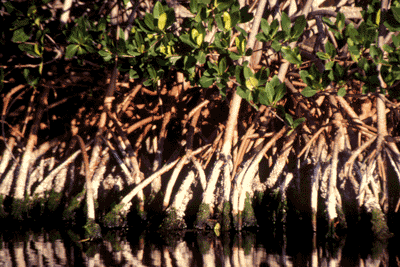
© Chris Anderson
|
|
More information about mangroves can be found in the brochure "Florida's Mangroves" (PDF, 512 KB).
|
|
SALT MARSHES and MUD FLATS
Like seagrasses, marshes provide food and cover for a vast array of small fish and wildlife. These marshes, which periodically become submerged, nourish and protect many fish and birds. They also buffer upland areas from storms and help filter pollutants that run off the land.
Mud flats around the harbor’s fringe are exposed at low tide. Although these flats are barren of visible vegetation, they are teeming with life. Fiddler crabs, clams, and worms, which burrow in the mud, supply a veritable feast for birds wading at low tide.
|
|
More information about salt marshes can be found in the brochure "Florida's Salt Marshes" (PDF, 328 KB).
|
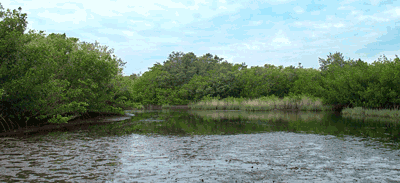
© Lindsay Cross
|
|
OYSTER BARS
Oysters are immobile shellfish that filter water as they feed. Their gray-white shells are irregular in shape. Live oysters and dead oyster shells form mounds on the harbor floor, creating bars or reefs. Most prevalent near river mouths and in sections of the harbor that receive a steady diet of fresh water, oyster bars attract adult snook and red drum, making them popular fishing spots.
|
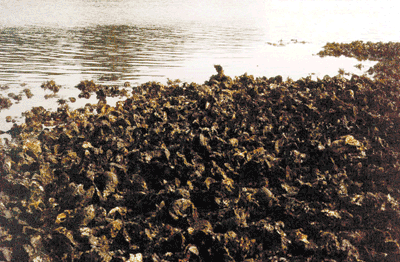
|
Exercise caution in these areas. Oyster bars may severely damage boat hulls and are treacherous for those on foot.
Shellfish harvesting is allowed in portions of Lemon Bay, Gasparilla Sound, Pine Island Sound, and Matlacha Pass. For more information about shellfish harvest and seasonal closures, visit the Florida Department of Agriculture and Consumer Services at www.floridaaquaculture.com For size and bag limits, visit the FWC Division of Marine Fisheries Management.
|
If you have any questions, comments, or suggestions about this Web site, please e-mail us at Boating_Guides@MyFWC.com.
Would you like to receive notices of changes to this Web site and the Boating and Angling Guide to Charlotte Harbor? If so, please e-mail us and include SUBSCRIBE-CHARLOTTE in the subject line.
|
|
